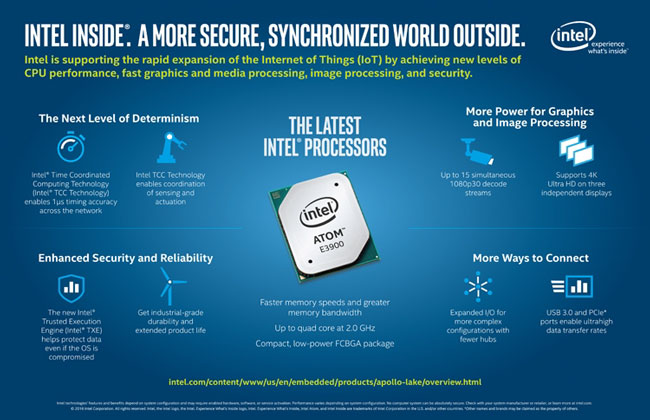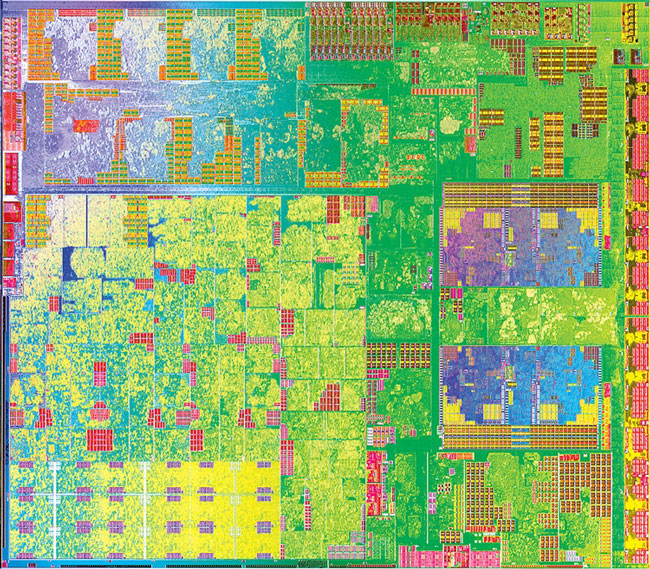OOPS! You forgot to upload swfobject.js ! You must upload this file for your form to work.
Intel Atom E3900 processor for very heavy things with Internet connection
![]()
|
xtreview is your : Video card - cpu - memory - Hard drive - power supply unit source |
|
|||
|
|
||||
 Recommended : Free unlimited image hosting with image editor
Recommended : Free unlimited image hosting with image editor
|
xtreview is your : Video card - cpu - memory - Hard drive - power supply unit source |
|
|
|
|
||
|
Xtreview Support  N-Post:xxxx Xtreview Support        |
INTEL ATOM E3900 PROCESSOR FOR VERY HEAVY THINGS WITH INTERNET CONNECTION |
| Please Feel Free to write any Comment; Thanks  |
Atom C3000 processors registered in the Intel Price List (2017-08-19)
Atom processors defect pushed Synology to provide year extended warranty (2017-02-21)
Defects Atom processor can cost Cisco 125 million (2017-02-19)
Systems based on defective Atom processors once booting (2017-02-08)
Atom processors defect undermined performance Intel server division (2017-02-03)
Scientists have created a copper wire with a diameter of three atoms (2016-12-27)
Intel Atom E3900 processor for very heavy things with Internet connection (2016-10-29)
Intel announced processors Atom Apollo Lake (2016-04-15)
Atom processors Cherry Trail has grown by two more models (2016-02-19)
To the range of processors Intel Atom x5 added three new models (2016-02-11)
Few details about the 14-nm SoC Intel Atom Denverton (2015-11-01)
Atom Z3590 Moorefield Processor (2015-09-02)
The new version of Google Glass will be based on Intel Atom (2015-07-09)
Learning anatomy of graphics card Radeon R9 Fury X (2015-06-20)
Samsung CHOPIN-LTE Android-tablet based on Intel Atom with 4 GB of RAM (2015-05-22)
The transition from 22 nm to 14 nm reduced Intel Atom core by 64 percents (2015-04-08)
The positioning of new Atom processor (2015-03-04)
Intel officially unveiled SoC SoFIA Atom x3 (2015-03-03)
Intel will introduce a new system of Atom processors notation (2015-02-26)
Satellite Click Mini and Encore 2 Write - new Toshiba tablets on Intel Atom (2015-01-08)
![]()
To figure out your best laptops .Welcome to XTreview.com. Here u can find a complete computer hardware guide and laptop rating .More than 500 reviews of modern PC to understand the basic architecture


7600gt review
7600gt is the middle card range.
We already benchmarked this video card and found that ...

 geforce 8800gtx and 8800gts
geforce 8800gtx and 8800gts  Xtreview software download Section
Xtreview software download Section  AMD TURION 64 X2 REVIEW
AMD TURION 64 X2 REVIEW  INTEL PENTIUM D 920 , INTEL PENTIUM D 930
INTEL PENTIUM D 920 , INTEL PENTIUM D 930  6800XT REVIEW
6800XT REVIEW  computer hardware REVIEW
computer hardware REVIEW  INTEL CONROE CORE DUO 2 REVIEW VS AMD AM2
INTEL CONROE CORE DUO 2 REVIEW VS AMD AM2  INTEL PENTIUM D 805 INTEL D805
INTEL PENTIUM D 805 INTEL D805  Free desktop wallpaper
Free desktop wallpaper  online fighting game
online fighting game  Xtreview price comparison center
Xtreview price comparison center Lastest 15 Reviews


Rss Feeds
Last News
- The new version of GPU-Z finally kills the belief in the miracle of Vega transformation
- The motherboard manufacturer confirms the characteristics of the processors Coffee Lake
- We are looking for copper coolers on NVIDIA Volta computing accelerators
- Unofficially about Intels plans to release 300-series chipset
- The Japanese representation of AMD offered monetary compensation to the first buyers of Ryzen Threadripper
- This year will not be released more than 45 million motherboards
- TSMC denies the presentation of charges from the antimonopoly authorities
- Radeon RX Vega 64 at frequencies 1802-1000 MHz updated the record GPUPI 1B
- AMD itself would like to believe that mobile processors Ryzen have already been released
- AMD Vega 20 will find application in accelerating computations
- Pre-orders for new iPhone start next week
- Radeon RX Vega 57, 58 and 59: the wonders of transformation
- ASML starts commercial delivery of EUV-scanners
- The older Skylake processors with a free multiplier are removed from production
- Meizu will release Android-smartphone based on Helio P40
- AMD Bristol Ridge processors are also available in American retail
- The fate of Toshiba Memory can be solved to the next environment
- duo GeForce GTX 1080 Ti in GPUPI 1B at frequencies of 2480-10320 MHz
- New Kentsfield overclocking record up to 5204 MHz
- Lenovo released Android-smartphone K8

HALO 3 HALO 3 - Final Fight!

PREY Prey is something you don t often see anymore: a totally unigue shooter experience.

computer news computer parts review Old Forum Downloads New Forum Login Join Articles terms Hardware blog Sitemap Get Freebies




